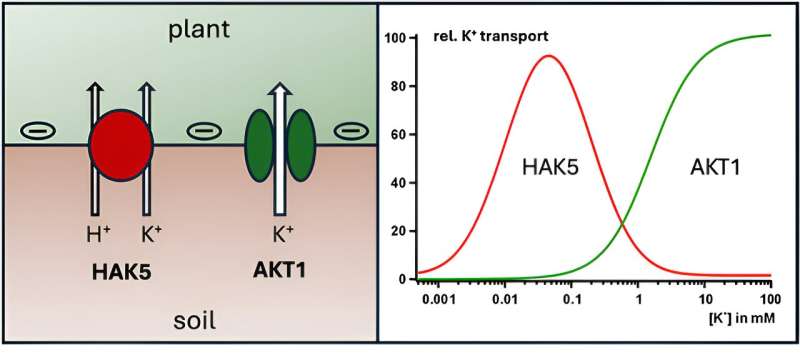A fascinating study reveals how plants skillfully manage their potassium intake, optimizing energy usage and adapting to varying soil conditions. Delving into the intricate mechanisms behind this process, the research sheds light on the potential for developing crop varieties that can thrive with minimal fertilizer. This discovery holds promise for more sustainable agricultural practices and food production.

Mastering Potassium Absorption: Plants’ Ingenious Adaptation
Plants are remarkable in their ability to extract even the smallest traces of potassium, a crucial nutrient, from the soil. This is particularly impressive given the vast differences in potassium concentrations across different soil types – some soils can contain up to a thousand times less of this essential element than others.
To adapt to these fluctuating conditions, plants have developed sophisticated mechanisms that allow them to precisely regulate their potassium uptake. At the heart of this process are the interplay between the potassium ion channel AKT1 and the potassium transporter HAK5. While the AKT1 channel requires higher soil potassium levels to function effectively, the HAK5 transporter can operate even in low-potassium environments. This strategic collaboration enables plants to maximize their potassium absorption while minimizing the energy expenditure required.
The Ingenious Energy-Saving Strategies of Plants
The Würzburg research team, led by Professor Rainer Hedrich, has uncovered the intricacies of how plants save energy when absorbing potassium. They found that the HAK5 transporter, which is active in low-potassium conditions, requires the energy of the pH gradient across the cell membrane to function. This pH gradient, which the plant must actively build up, comes at a significant energy cost.
However, the researchers discovered that the HAK5 transporter and the AKT1 channel work together in an energy-efficient manner. When soil potassium levels are high, the energy-intensive HAK5 transporter is switched off, allowing the AKT1 channel to take over. This seamless transition between the two systems ensures that plants can absorb potassium effectively while minimizing their energy expenditure, a remarkable adaptation that allows them to thrive in diverse soil conditions.
Unlocking the Potential for Sustainable Agriculture
The insights gained from this study have important implications for the future of agriculture. By understanding the molecular mechanisms behind plants’ potassium absorption, researchers can now focus on breeding crop varieties that can produce high yields even in non-fertilized or lightly fertilized fields.
This breakthrough holds the promise of more sustainable farming practices, as it could reduce the reliance on energy-intensive and environmentally-taxing fertilizers. Ultimately, this research paves the way for the development of crops that can manage with less fertilizer, a crucial step towards ensuring food security and environmental sustainability in the years to come.
